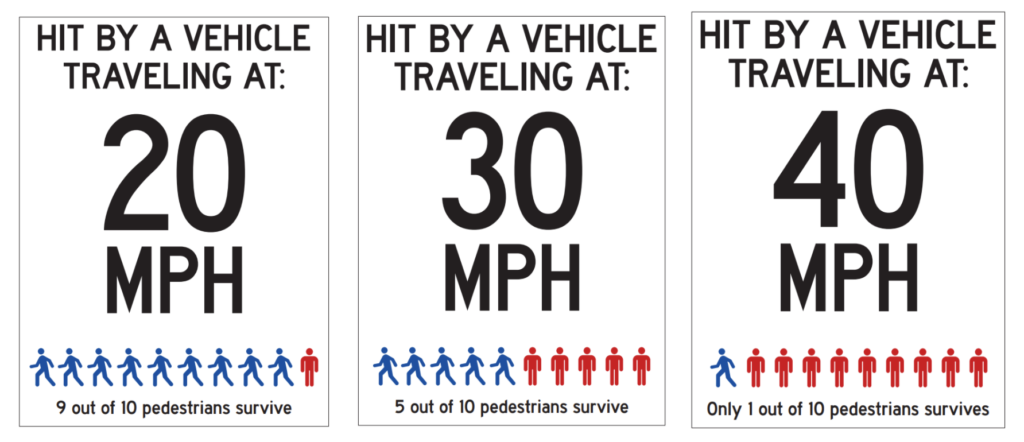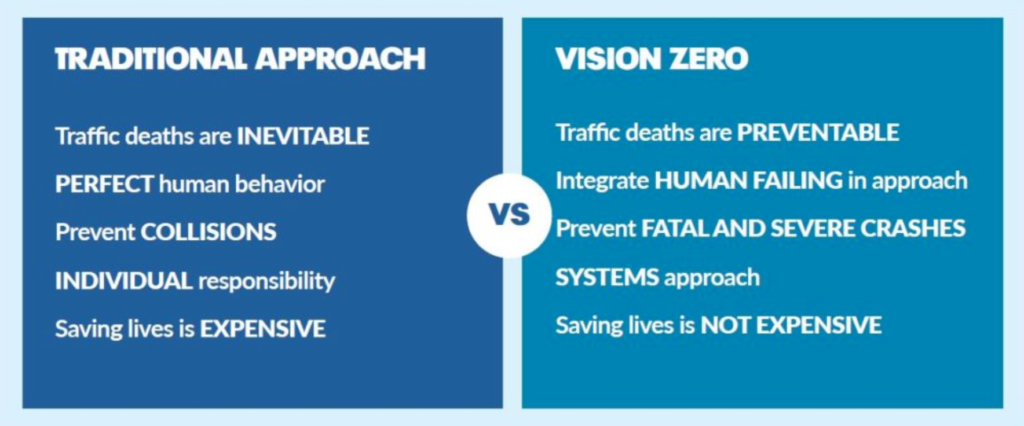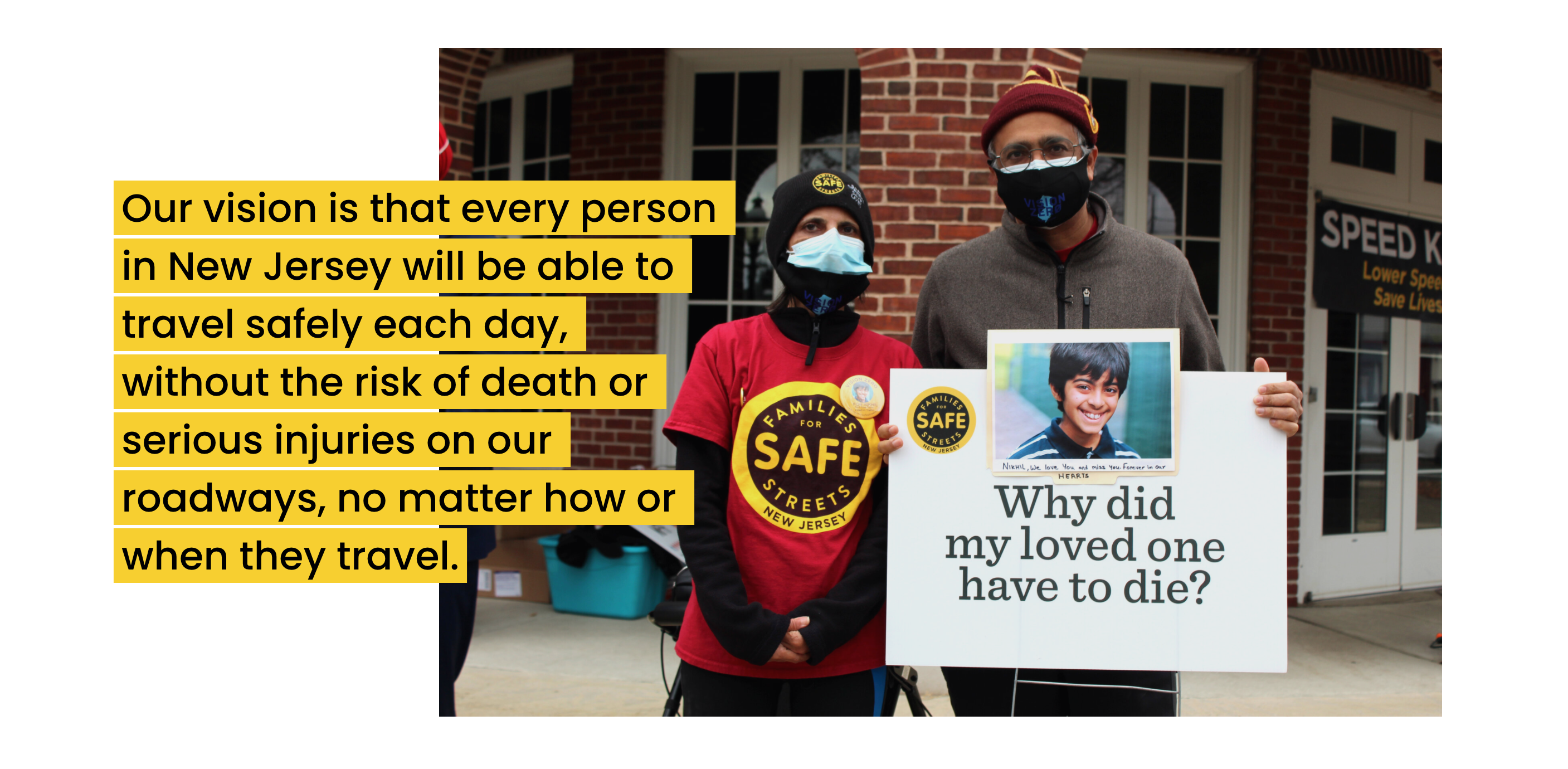Despite fewer people on the roads due to the COVID-19 pandemic, the number of traffic fatalities has gone up nationally, including in New Jersey. This alarming trend is caused primarily by speeding; previously congested roads became wide-open with low volume traffic, which has the effect of encouraging motorists to drive faster than the posted speed limit. The likelihood of being killed in a crash exponentially increases with speed and the design of many existing roads indirectly encourages driving over the speed limit, even in pre-pandemic times. It’s time to bring new, proven, evidence-based road design to NJ.

In the past five years, New Jersey has averaged over 600 deaths per year from car crashes. As a society, we find deaths from plane crashes and train derailments unacceptable and take strong measures to ensure deaths and serious injuries are avoided. And yet, we don’t take this approach with cars–why are tens of thousands of deaths on U.S. roads acceptable?
As a member organization of the Vision Zero New Jersey Alliance, we believe that the only “acceptable” number of deaths and serious injuries on our streets is zero. This goal may sound lofty, but it is fully within our reach with the tools we already have; we just need to shift the framework of traffic safety.
What is Vision Zero?
Vision Zero challenges the myth that we must accept traffic violence and the deaths and injuries it causes. The policy framework is a fundamentally different approach to our transportation system that prioritizes safety and focuses on data and road design to reduce the number and severity of crashes, rather than putting the onus on the behavior of individual road users. Vision Zero is a strategy to eliminate all traffic fatalities and severe injuries, while increasing safe, healthy, and equitable mobility for all.

Reducing speed by utilizing traffic calming measures can save hundreds of lives – especially in areas where people are likely to be walking or bicycling such as school zones. Safety measures can include a wide variety of infrastructure changes and additions: protected bike lanes, wide and well-maintained sidewalks, and narrower driving lanes are just a few examples of simple changes that make a big difference. Cities across the country and around the world have shown how these strategies can save lives. Oslo recently achieved their goal of zero bicycle and pedestrian deaths.
Vision Zero in New Jersey
The Vision Zero New Jersey Alliance is a newly formed coalition of families, residents, organizations, non-profits, and other allies calling for an end to traffic violence across the entire state of New Jersey. Hoboken and Jersey City have already made a commitment to Vision Zero, as have New Jersey’s largest neighboring cities of Philadelphia and New York City. However, city-level initiatives can only go so far. In New Jersey, the state controls a mere 7% of all roads statewide, but it’s on these roads that nearly half of all traffic-related deaths and injuries occur. We need action at the state level to ensure every road in New Jersey is designed and maintained to guarantee safety for all users, regardless of mode, age, ability, income, race, or location.
To follow our progress, follow Vision Zero New Jersey on Twitter. If you would like to help this effort, please sign the petition calling on the state to commit to Vision Zero on their website.

